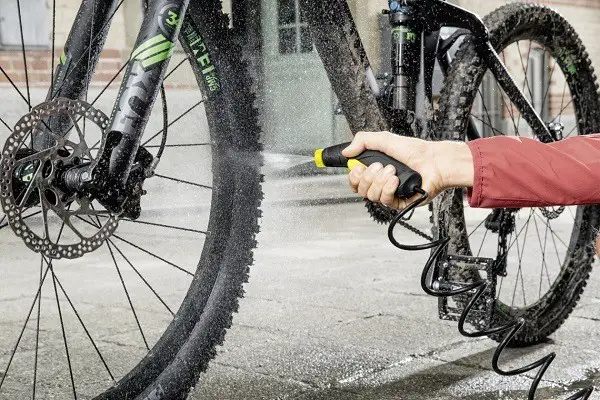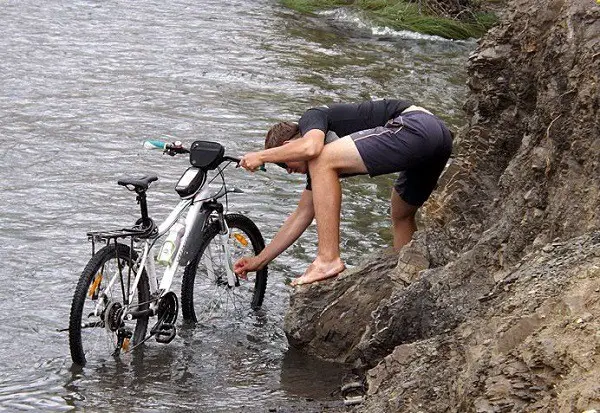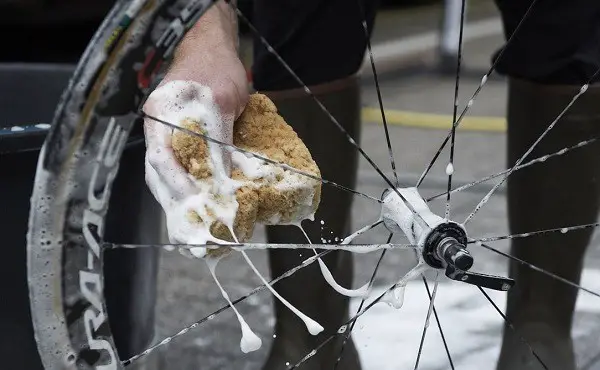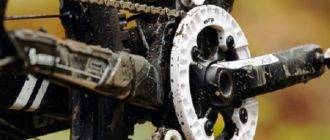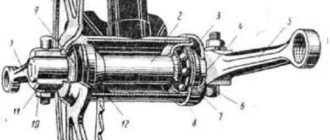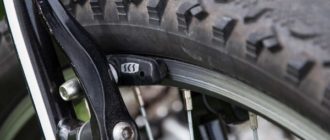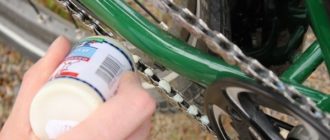Cleanliness is the key to health. And this rule applies not only to people. Machines, too, like to be clean and cared for on time. Wherever you ride your iron horse, you should clean and wash it regularly. Otherwise, you won’t be able to avoid premature wear of parts and mechanisms.
How often should you wash your bike? What products should I use and where should I wash my bike? What do I need to pay attention to when cleaning my bike’s main parts and components? To these and many other questions, we will try to give comprehensive answers. And we’ll also tell you how to take care of your bike to extend its life.
When and why to wash your bike
A bicycle, like any other machine, requires care. The essence of it is the timely cleaning of mechanisms and lubrication of certain components. How do you know when it’s time to clean your bike? Of course, lumps of dried up dirt on the wheels, chain and pedals are the most colorful signs. But there are other “symptoms” that tell you that it would be a good idea to clean your bike.
Signs that the drivetrain needs cleaning:
- Unusual noises in operation;
- difficulty turning the pedals;
- clicking of the carriage;
- difficulty shifting gears.
Timely care of your bike will save you a lot of potential trouble:
- premature wear and stretching of the chain;
- abrasion of teeth on sprockets;
- rusting of metal components;
- risk of unplanned braking.
Even fine sand that gets into the drivetrain elements can significantly compromise the integrity of parts in just a couple of months. Sand, clay, earth and other abrasive elements will “wear out” the chain, sprockets, rims, pads and other rubbing parts fairly quickly. Dirt also penetrates the cables, derailleurs, rollers and other components, which makes all the mechanisms of the bike begin to work poorly.
Timely cleaning and proper washing of the bike greatly prolongs the life of all parts and mechanisms of the bike. Therefore, you should carefully look after your iron friend, not allowing a long stay of dirt in its mechanisms.
Places to wash your bike
Optimal option – the yard of a private house. In a spacious area, you can conveniently put the bike and arrange near it everything you need for washing. In addition, the flowing water will quickly go into the ground, and the whole process will not cause significant inconvenience to others.
There are other options as well:
- Residents of high-rise buildings can wash their iron horse near the entrance. Not the best option, as this idea will not please every neighbor. Nevertheless, if there is a possibility, you can wash your bike near the house (near the garages, for example).
- By the river, lake or any other body of water. We don’t encourage this because the dirt and detergents from the street would end up in the pond.
- At home. In the hallway or bathroom. In this case, the need for subsequent cleaning may discourage the desire to wash the bike altogether. In addition, the bathroom layout and its area often do not allow you to easily bring your bike into it, avoiding the removal of the wheels.
What you should definitely not do is wash your bike at a car wash. A powerful jet of water can easily destroy some components of the bike: hubs, shock absorbers, brakes, etc.
A step by step algorithm
So, you have already decided where you are going to “wash”. It remains only to prepare everything you need. You can go two ways:
- The old-fashioned way – with rags and water.
- The modern method: you need a medium-hard brush, a dry and clean rag, special shampoo for bicycles or cars, degreaser and lubricant for transmission components.
Many people ask the question: can I wash my bike with a kerher? In fact, you can, but it should be done as carefully and delicately as possible. Especially vulnerable to a powerful jet of water are such elements as pedal bearings, carriage, bushings and steering column. Keep in mind that hard water pressure can easily knock out the grease, which can cause some parts and mechanisms of a bicycle to quickly become unusable. Therefore, it is better to wash your bike manually. The procedure is as follows:
- Place the bike in a stable position. Place the vehicle on a step, if available, or lean it against a tree or other stable object.
- Wash all surfaces with running water using a hose, bottle or bucket and mug.
- Use a brush to clean all the driveline components. A degreasing agent in the form of an aerosol comes in handy here.
- Soapy water will help to cope with especially hard and sticky soiling. Even an ordinary Fairy will do, which should be added to water and, using a sprayer, sprayed over the heavily polluted components, and then rubbed with a brush.
- Next, soak a cloth in soapy water and go over all the surfaces of the bike, wiping the frame, fenders, saddle, handlebars and other components.
- Clean the wheels thoroughly. Dirt that has become embedded in the tread can be removed with a brush. To facilitate the process, you can put the wheel in a basin of water and spin it several times to soak up the sand and clay. It is also necessary to remove dirt in the grooves of the spokes.
In fact, this is the end of the story. All that remains is to run water over the bike one more time to remove any detergent residue from all surfaces. The next step is to dry the bike. If the weather is nice and sunny, it is enough to wipe the accessible areas with a dry towel and leave the bike outside until it is completely dry.
The metal components of the bike can be treated with special polishing compounds. As soon as all parts and mechanisms are dry, you should apply a fresh coat of lubricant.
How not to damage your bike when you wash it
It would seem that washing the equipment can do no harm. But if you make certain mistakes, “hygiene” of the bike can have negative consequences. We draw your attention to some tips that will allow you to avoid problems in the future:
- Do not use the same rag for all parts of the bike. There should be one brush/rag for the frame and another for the drivetrain. Otherwise you could get grease on the decorative surfaces.
- Do not use a brush that is too hard to scrape off the dried-on dirt. Do not use a wire brush to remove dirt and stains, and certainly not a wire brush to remove dirt and stains.
- Overly harsh chemicals are the greatest enemy of all bicycle parts. The acid in most detergents easily corrodes the paintwork of your bicycle. Then restore it is quite difficult and expensive. Painting a bicycle at home is a creative process, of course, but most often unplanned.
- If you find a decent layer of dried mud on the bike, do not rush to scrape it off. First, you should try to soak the dirt and try to dislodge it with a weak head of water.
- Completely immersing your bike in a river or bathtub is not a good idea. In this case, the moisture is sure to get inside the mechanisms, and to remove rust from the handlebars and bike chain is not always possible.
If you own a high-performance and good mountain bike, try to limit water spray near the shock absorbers and forks.
Recommendations
Make it a good habit to clean your bike after each ride. The whole process takes no more than five minutes, and doing it regularly will save the need for a general wash. A medium-hard brush, clean and dry rags (one rag for the handlebars and frame, another for the “dirty” elements like bike chain, sprockets, etc.) come in handy for constant bike cleaning.
In addition, cleaning the bike after each use will allow you to spot any impending damage in time.
Conclusion
A clean bike is a fast bike. Moreover, regular cleaning and washing your bike increases its attractiveness and prolongs the life of all components. You can wash your bike yourself either in the yard of a private home or in a city apartment. The main thing is to do everything carefully to avoid getting moisture in important components and mechanisms.

